This is a preprint.
Life-long music and dance relationships inform impressions of music- and dance-based movement therapies in individuals with and without mild cognitive impairment
- PMID: 38798436
- PMCID: PMC11118554
- DOI: 10.1101/2024.05.09.24307114
Life-long music and dance relationships inform impressions of music- and dance-based movement therapies in individuals with and without mild cognitive impairment
Update in
-
Life-long music and dance relationships and therapeutic impressions in individuals with and without mild cognitive impairment to inform the design of music- and dance-based therapies.J Alzheimers Dis. 2025 Jun;105(4):1047-1068. doi: 10.1177/13872877241294090. Epub 2025 Mar 25. J Alzheimers Dis. 2025. PMID: 40129418
Abstract
Background: No effective therapies exist to prevent degeneration from Mild Cognitive Impairment (MCI) to Alzheimer's disease. Therapies integrating music and/or dance are promising as effective, non-pharmacological options to mitigate cognitive decline.
Objective: To deepen our understanding of individuals' relationships (i.e., histories, experiences and attitudes) with music and dance that are not often incorporated into music- and dance-based therapeutic design, yet may affect therapeutic outcomes.
Methods: Eleven older adults with MCI and five of their care partners/ spouses participated (4M/12F; Black: n=4, White: n=10, Hispanic/ Latino: n=2; Age: 71.4±9.6). We conducted focus groups and administered questionnaires that captured aspects of participants' music and dance relationships. We extracted emergent themes from four major topics, including: (1) experience and history, (2) enjoyment and preferences, (3) confidence and barriers, and (4) impressions of music and dance as therapeutic tools.
Results: Thematic analysis revealed participants' positive impressions of music and dance as potential therapeutic tools, citing perceived neuropsychological, emotional, and physical benefits. Participants viewed music and dance as integral to their lives, histories, and identities within a culture, family, and/ or community. Participants also identified lifelong engagement barriers that, in conjunction with negative feedback, instilled persistent low self-efficacy regarding dancing and active music engagement. Questionnaires verified individuals' moderately-strong music and dance relationships, strongest in passive forms of music engagement (e.g., listening).
Conclusions: Our findings support that individuals' music and dance relationships and the associated perceptions toward music and dance therapy may be valuable considerations in enhancing therapy efficacy, participant engagement and satisfaction for individuals with MCI.
Keywords: Alzheimer’s disease; dance therapy; mild cognitive impairment; motor cognition; music therapy; rehabilitation.
Conflict of interest statement
Conflicts of Interest: Madeleine E. Hackney is an Editorial Board Member of this journal, but was not involved in the peer-review process nor had access to any information regarding its peer-review. No other co-authors have any conflicts of interest.
Figures
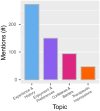
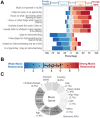
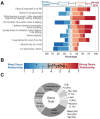
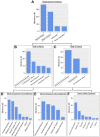
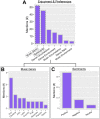

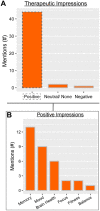
Similar articles
-
Life-long music and dance relationships and therapeutic impressions in individuals with and without mild cognitive impairment to inform the design of music- and dance-based therapies.J Alzheimers Dis. 2025 Jun;105(4):1047-1068. doi: 10.1177/13872877241294090. Epub 2025 Mar 25. J Alzheimers Dis. 2025. PMID: 40129418
-
Associations between music and dance relationships, rhythmic proficiency, and spatiotemporal movement modulation ability in adults with and without mild cognitive impairment.J Alzheimers Dis. 2025 Jun;105(4):1165-1182. doi: 10.3233/JAD-231453. Epub 2024 Jul 6. J Alzheimers Dis. 2025. PMID: 38995778
-
Associations between music and dance relationships, rhythmic proficiency, and spatiotemporal movement modulation ability in adults with and without mild cognitive impairment.bioRxiv [Preprint]. 2024 Jun 8:2023.12.19.572238. doi: 10.1101/2023.12.19.572238. bioRxiv. 2024. Update in: J Alzheimers Dis. 2025 Jun;105(4):1165-1182. doi: 10.3233/JAD-231453. PMID: 38187592 Free PMC article. Updated. Preprint.
-
Cognitive benefits of music in aerobic exercise: Evidence from a Bayesian network meta-analysis in adults with mild cognitive impairment.Arch Gerontol Geriatr. 2025 Jul;134:105848. doi: 10.1016/j.archger.2025.105848. Epub 2025 Apr 12. Arch Gerontol Geriatr. 2025. PMID: 40287987 Review.
-
Dementia -- Caring, Ethics, Ethnical and Economical Aspects: A Systematic Review [Internet].Stockholm: Swedish Council on Health Technology Assessment (SBU); 2008 Jun. SBU Assessment No. 172. Stockholm: Swedish Council on Health Technology Assessment (SBU); 2008 Jun. SBU Assessment No. 172. PMID: 28876770 Free Books & Documents. Review.
References
-
- Winblad B, Palmer K, Kivipelto M, Jelic V, Fratiglioni L, Wahlund LO, Nordberg A, Bäckman L, Albert M, Almkvist O, Arai H, Basun H, Blennow K, de Leon M, DeCarli C, Erkinjuntti T, Giacobini E, Graff C, Hardy J, Jack C, Jorm A, Ritchie K, van Duijn C, Visser P, Petersen RC (2004) Mild cognitive impairment--beyond controversies, towards a consensus: report of the International Working Group on Mild Cognitive Impairment. J Intern Med 256, 240–246. - PubMed
-
- Belleville S, Chertkow H, Gauthier S (2007) Working memory and control of attention in persons with Alzheimer’s disease and mild cognitive impairment. Neuropsychology 21, 458–469. - PubMed
-
- Hamer M, Chida Y (2009) Physical activity and risk of neurodegenerative disease: a systematic review of prospective evidence. Psychol Med 39, 3–11. - PubMed
-
- Olazarán J, Reisberg B, Clare L, Cruz I, Peña-Casanova J, Del Ser T, Woods B, Beck C, Auer S, Lai C, Spector A, Fazio S, Bond J, Kivipelto M, Brodaty H, Rojo JM, Collins H, Teri L, Mittelman M, Orrell M, Feldman HH, Muñiz R (2010) Nonpharmacological therapies in Alzheimer’s disease: a systematic review of efficacy. Dement Geriatr Cogn Disord 30, 161–178. - PubMed
Publication types
Grants and funding
LinkOut - more resources
Full Text Sources
Miscellaneous
